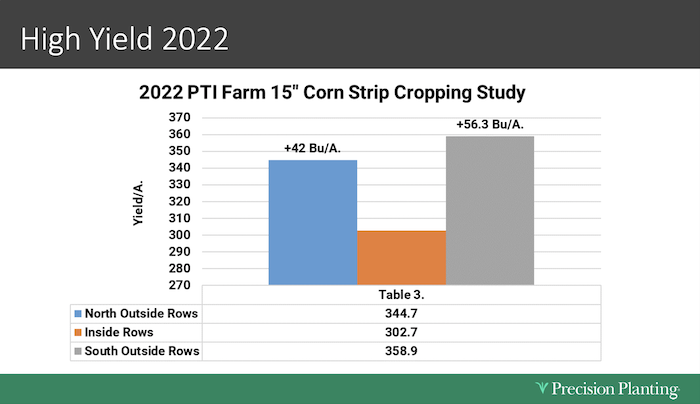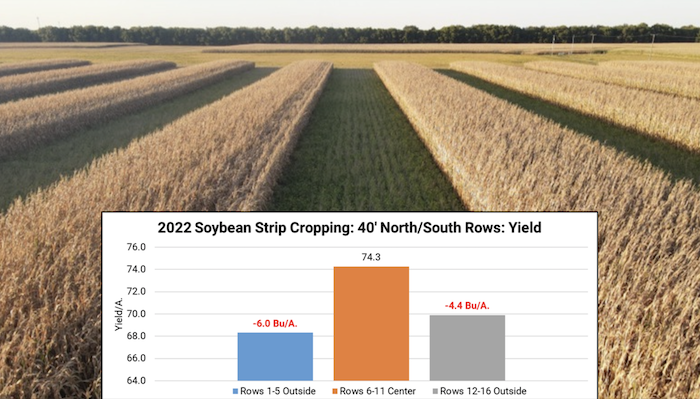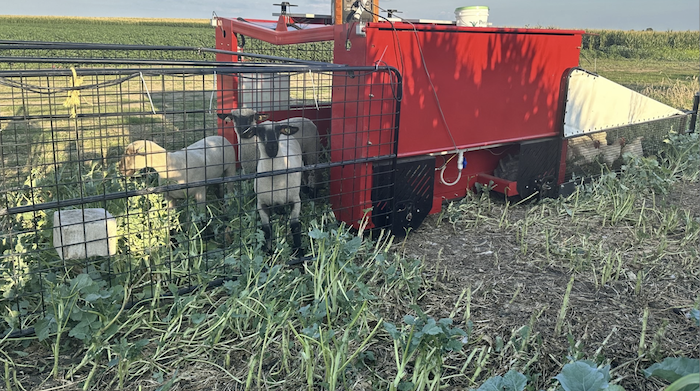Jason Webster is a farmer and the lead commercial agronomist for the Precision Technology Institute (PTI) for Precision Planting in Pontiac, Illinois. Webster and his team conducted 160 agronomy trials at the PTI’s 400-acre research farm in 2023, and hosted thousands of visitors from around the world to share their results.
Among the noteworthy studies in 2022-2023 was a set of experiments that looked at strip-cropping corn and soybeans in different formations.
Some fields were planted in a north-south orientation; some were east-west. The soybeans get shaded by the corn, particularly in the north-south strips, but the corn captures extra sunlight.
“Does strip-cropping increase corn yield? It sure does,” Webster says. “Last year we were seeing 40-50 bushel yield gains in our strip-cropping. We go from 190-bushel corn to 240-260 bushels on the outside edges in the north-south plots. It's incredible. How else can you get a 40-50 bushel yield swing in corn?”
Management is more intense with strip-cropping, and the team is still trying to figure out ideal row width, Webster says. They’ve tried 40-foot strips, 20-foot strips and 10-foot strips in 2023. Harvest is also a challenge with 10-foot rows, he adds.
The other problem is soybean yield loss in the north-south strips, Webster saw losses of 4-6 bushels per acre. Soybean losses are unsustainable, so a replacement is required.

Webster’s idea: cover crops and livestock, specifically sheep and chickens.
“Move over, soybeans. We're going to put cover crops in," Webster says. "We've got multiple species of cover crops. And we've got the stock cropper in. We're running sheep up in front of an autonomous confinement center that can move automatically in the field for us. It acts as my lawnmower. And then we've got a bunch of chickens in the back that are going to scavenge. And while these animals are all doing that, guess what they're giving me? Free organic fertilizer.”

The animals mow the cover crops and put fertilizer in the ground, and in the fall Webster runs the strip-till rig through the field, hopefully setting the stage for all-time high yields in corn.
So far, the soil in those plots looks “unbelievable,” says Webster. “The soil looks so rich and we just started this thing. What's it going to be like at the end of two, three, four, five years? It's going to be interesting to watch,” he says.
How can high management techniques be incorporated on more acres? That’s a big question, and it’s one the PTI team is always trying to figure out, Webster says.
Sometimes he gets asked whether growing high management corn and soybeans is worth it for the increased yields.
“My 398-bushel corn was 156 bushels better than status quo Livingston County corn, and I made an extra $630 per acre," Webster says. "That tells me this is sustainable. If I'm looking at negative numbers across the board, it does me no good to try to grow high yield corn, but we're actually making some money here. But the big question is, how do I do this on more acres? That's what we're trying to figure out.”






